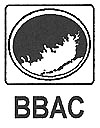BBAC Press release on NDA

For immediate release
March 16, 2000
Contact: Mr. Leonard Gonsalves
508-999-1131
Buzzards Bay towns and Action Committee join in call for a boat-sewage No Discharge Area designation for Buzzards Bay
The Buzzards Bay Action Committee, a nonprofit organization composed of municipal officials, has requested that the Commonwealth of Massachusetts and the US Environmental Protection Agency designate all of Buzzards Bay a boat-sewage No Discharge Area. The Action Committee submitted its request to the state in February. On March 9, Secretary of Environmental Affairs Bob Durand approved and endorsed the Action Committee’s request, and submitted the application to the US EPA.
The designation, if approved by the EPA, would mean that the discharge of sewage from boats, even if it is treated, would be prohibited in Buzzards Bay. According to Leonard Gonsalves, Director of the Action Committee and Selectman for the Town of Dartmouth, “this is one of several initiatives that the communities of Buzzards Bay have joined together to protect and restore water quality and living resources in Buzzards Bay. This designation is part of a larger effort by the communities to treat stormwater, upgrade failed septic systems, and upgrade sewage treatment facilities, and reduce fuel and oil spills in Buzzards Bay.” Previously the towns of Wareham and Westport adopted no-discharge areas in 1992 and 1994 respectively. The new designation will include the remaining nine Buzzards Bay coastal towns.
Mr. Gonsalves, who for the past two years has visited Boards of Selectmen, Harbormasters, and Shellfish Officers to generate support for the designation said “town support has been overwhelming.” The citizen group, the Coalition for Buzzards Bay, is also supporting the designation, and will play a role in ensuring the success of the designation. With a grant from the state, the Coalition’s new boat the Baykeeper will be equipped with boat sewage pump-out equipment so that boats with holding tanks can have their vessel’s pumped. The Baykeeper will be especially important in providing pumpouts to boats in Cuttyhunk Pond on the Island of Cuttyhunk.
The application for the designation was prepared by the Buzzards Bay National Estuary Program at the request of the Buzzards Bay Action Committee. In that application, it was estimated that 12,000 boats are typically found docked or moored in Buzzards Bay. Of these, only 3,000 are believed to have toilets, referred to as “heads” by boaters. Under the busiest boating condition, the numbers of boats with heads would probably not exceed 4,000 boats. According to Dr. Joe Costa, Director of the Buzzards Bay NEP, who helped prepare the application, “about 85% of the boats in Buzzards Bay with toilets have what is referred to as “Type 3″ Marine Sanitary Devices. The Type 3s do not treat sewage and have holding tanks that require sewage pump-outs at docks. These holding tanks often have valves to allow the release of untreated sewage in the open ocean, but because Buzzards Bay is designated a Territorial Sea, it is currently illegal to discharge this untreated sewage anywhere in Buzzards Bay. In practical terms this No Discharge designation will only affect the 400 to 600 boats that have Type 1 or Type 2 toilets. These toilets grind up the sewage, typically add chemicals and discharge the slurry from the boat through a port on the hull. If this designation is approved, the owners of these boats may elect not to use these toilets while in Buzzards Bay, or they could retrofit them with a small holding tank that can be pumped out periodically.”
According to Mr. Gonsalves, the communities around Buzzards Bay have been working hard to ensure there are an adequate number of sewage pump-out facilities to handle the needs of boaters and enable this designation to be approved. “In 1990 there were only 13 pump-out facilities in Buzzards Bay. By this summer we will have increased that number to 37. And many of these pumpout facilities are located on Harbormaster operated vessels, so in most harbors, the boater doesn’t even have to come to a dock for a pump-out anymore. And the best part is, all these pump-outs are provided free.”